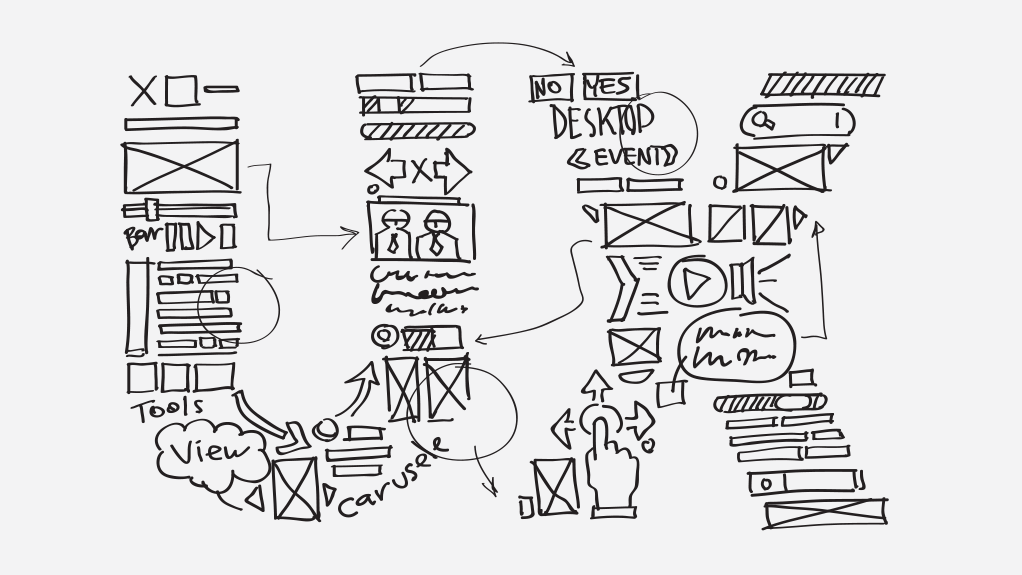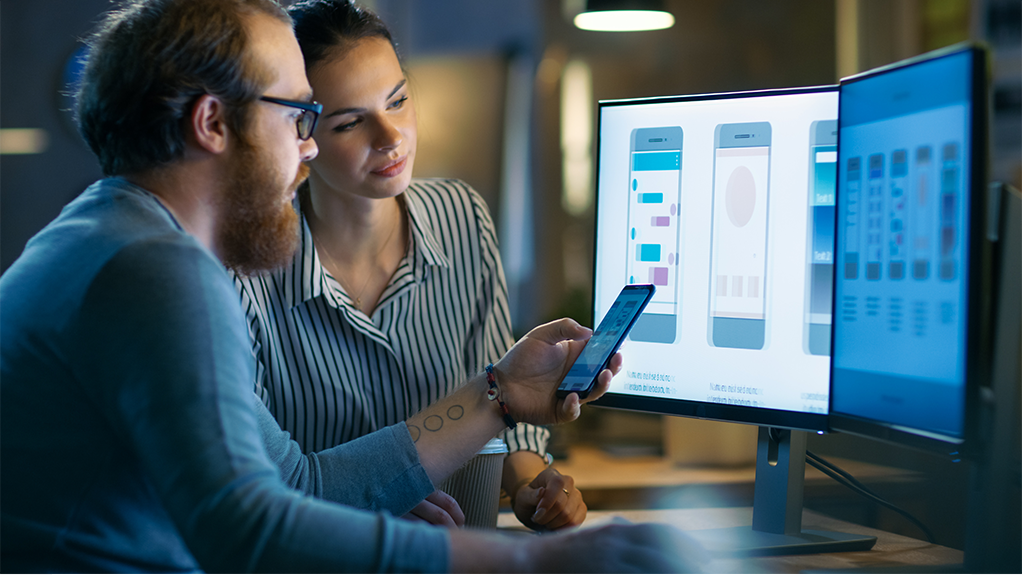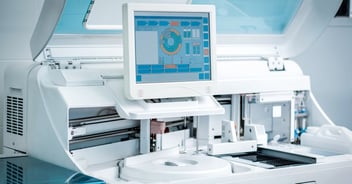Understanding Digital Product Development
One term often confused with digital product development is digital goods. While these two terms are fairly fluid and sometimes used interchangeably, digital goods usually refer to digital reflections of physical goods, i.e., ebooks or digital downloads for art prints. On the other hand, a digital product can be a highly complex system combining software, hardware, as well as physical assets and interactions.
Digital products can integrate whole new ways to interact with the physical and digital world, leveraging cloud storage, augmented reality, the Internet of Things, (IoT,) robust data processing, and AI to change the way that you do business. Digital products often include SaaS solutions that generate revenue based on a subscription model to ensure ongoing support and updates.
At the end of the day, an effective digital product:
-
Leverages technology to offer new solutions
-
Offers a digital interface accessed from various devices across distances
-
Expands your business’ influence and connectivity

Building a Digital Product That Supports Your Business Goals
Because a digital product can be so many different things, the ways it benefits your business can vary widely. Oftentimes, digital product development can directly drive revenue. However, it may also be a tool that augments in-person services or increases brand clout and customer trust. It may also streamline internal operations for your team and minimize time spent on automated tasks.
For example, we developed an app that would enable on-site self-guided tours for a large apartment management firm, complete with remote locking and live directions. Tenants aren’t paying for the app directly. However, the ease of this feature increases conversions for potential tenants, reduces the time staff spends conducting tours, and offers the company a major edge over competitors, marking it as an innovator in the space.
Pro tip: Consider the overall ROI of your digital product rather than just direct revenue generation. This helps you ideate great new features and build a more robust pitch to stakeholders.
Phases of Digital Product Development
Digital product development is seldom a quick and easy process. It requires precise strategizing, phased execution, and thoughtful investment of time and money. Understanding the major phases along the way can help you plan for success.
Stage 1: Research, Analysis, and Preparation
Before you embark on a major enterprise, you need to consider whether it’s worth doing at all. Is there a market for your digital product? What needs does it answer? How does it support your business goals? Who is your user and what are their major concerns?
Market research can help you answer these questions. Some data may already be available from your existing client base or analytics from related digital products. Research during this phase may include…
-
Website data
-
Focus groups
-
Surveys of your current customer base
-
Ad campaigns to gauge early interest
Other kinds of research can help you down the line, such as A/B design tests and beta testing of initial prototypes. However, for now, this preparatory research can help you get a handle on which features are the most important to your target user, and how much (or whether) they’re willing to pay for it.
During this stage, you’ll need to do an internal audit, based on your target goals and the information you get from market research, to determine what your budget and timeline are for the project.
Pro tip: If you only have the time and budget for limited market research, focus on your ideal customer, perhaps based on a contact list that you already have. Once you have a prototype and MVP, you may learn new things about how unexpected user types are putting your product to work. In the meantime, narrowing in on a more familiar user group helps you receive reliable feedback and launch from a solid platform of support.
Stage 2: Strategy and Ideation
Use all of the information you’ve gathered so far to outline a minimum viable product or MVP. This helps you define success for the product and determine which features are essential if you hit a snag in funding or scheduling. An MVP is not the same as a finished product. Rather, it’s a version of your product that will enable you to gather maximum information with the least effort. It may end up being phase one of your product deployment, or a prototype used to secure the next phase of funding.
As we work through the ideation process, we define audience types and create a user roadmap to anticipate desired features and weigh them against the effort involved to deliver those features. Stage two will also include future planning, including ideation for features that can be incorporated during the next iteration of your digital product.
Work in tandem with your project manager to create a product brief, which includes an outline of team roles, project deadlines, and checkpoints along the way. It may also include provisions and contingencies if surprises pop up, and coordinated start and stop points for dovetailing projects, such as continued market research and pre-launch marketing plans.
Pro tip: Take special note of the time periods in the product brief when your team is responsible to review and provide feedback. Being responsive and detailed in your feedback during these periods is the biggest thing your team can do to speed up the process.

Stage 3: Design and Development
This is when the rubber hits the road and things start to feel real. UX designers take your concept and create design concepts for the user interface. Usually, you can expect a round of designs, a period of feedback and critique, and then more specific design mockups for different frames of the user journey.
As the overall framework takes shape, the styling and functionality you see will get more fine-tuned. You’ll realize there are new views that need to be designed, micro-interactions that need to be added, and potential gaps in your original plan.
Stage 4: Prototyping and Validation
Now that we have a workable preliminary product, we can test the overall structure and obtain feedback from everyone involved. A prototype should be the most simplistic version of your product. It will allow you to obtain feedback from stakeholders, as well as from beta testers before you execute the final round of implementation. It also gives us the chance to check whether all product integrations, cloud storage, and API keys are working effectively.
Pro tip: There are small ways that you can generate varied prototypes that can be used for A/B testing. For example, you might try a couple of different color palettes, or light mode versus dark mode, and gather feedback from your market.
Stage 5: Agile Implementation
Once the design is approved, the project will move on completely to the development and programming team. Although needs can differ from one company to another, we most often recommend agile implementation for the bulk of your development process. Most agile teams break down development into sprints. This means that instead of a linear, waterfall hierarchy where one step or feature must be completed before you move on to the next one, features are broken out into multiple tasks that can be worked on concurrently. It allows us to put all hands on deck at the same time and to complete development that much faster.

Stage 6: Launch and Maintenance
The launch stage can look very different for different people. Whether you’re doing a test launch of a new product, or expanding your reach with an updated version of your tool, marketing plans for your launch should be carefully strategized during stage two.
Even when the launch is complete, digital product development is never really “complete”. To adapt to evolving user needs, changes within your business, and new technology capabilities, there should be constant updates and new rollouts of your product. Maintenance will include security patches, as well as correction of different bugs that arise when users interact with your product in unexpected ways. However, it will also include plans for new versions of the product that integrate brand-new features and functionality for your users.
Pro tip: 24/7 DevOps support for business-critical applications and services is often vital for a new rollout, and finding a company that continues to support you after your launch helps you know that they’re invested in your ongoing success.
Getting Digital Product Development Right the First Time
Your digital product development has the potential to reinvent your entire business. When you embark upon the process, it can be easy to get sidetracked, stalled, discouraged, and surprised. Don’t let these setbacks keep you from realizing the full potential of your digital product. Make thoughtful plans now that keep your business goals and user needs at the forefront of your mind.
Choosing a digital partner with experience in enterprise-level digital product development can make the difference between a product that winds up dead in the water and one that will continuously grow and thrive. Contact us today to learn what we can do for your business.



